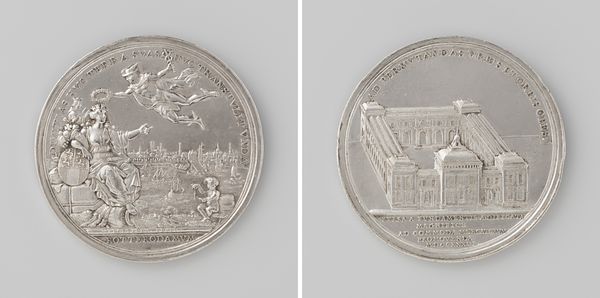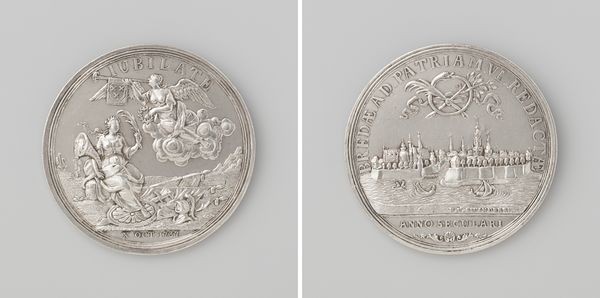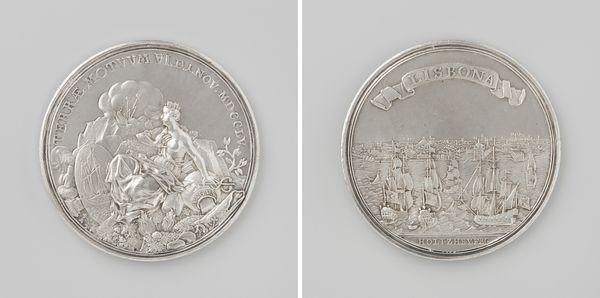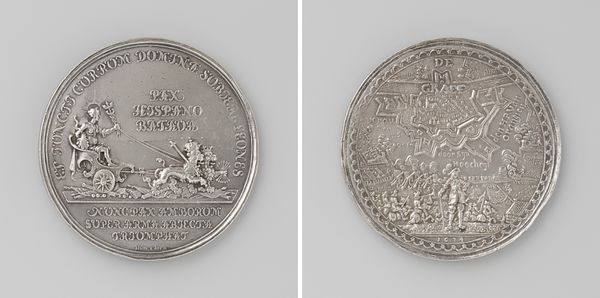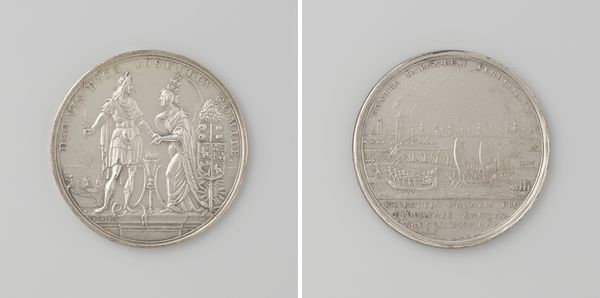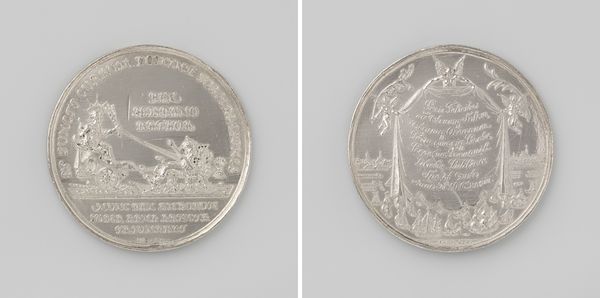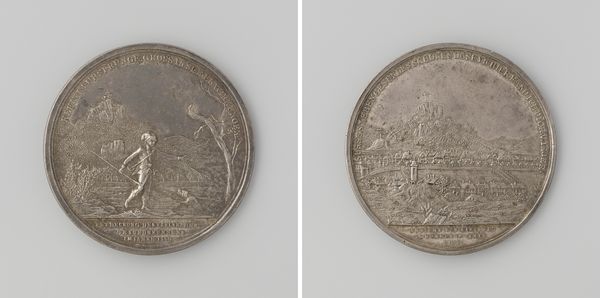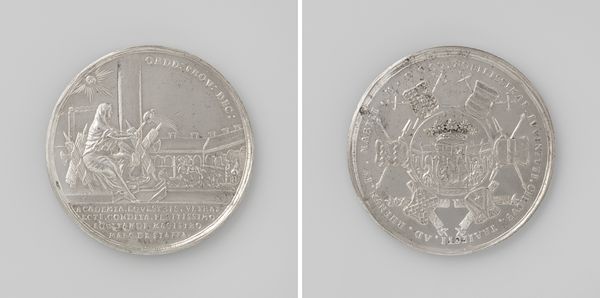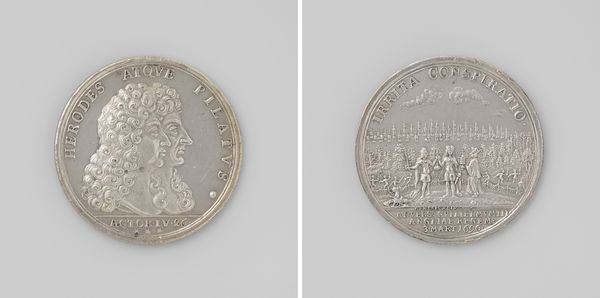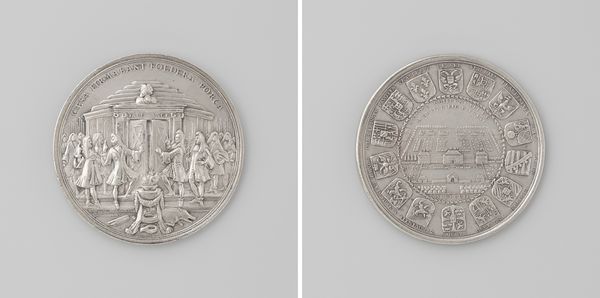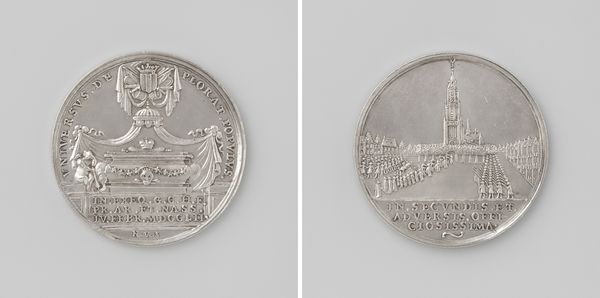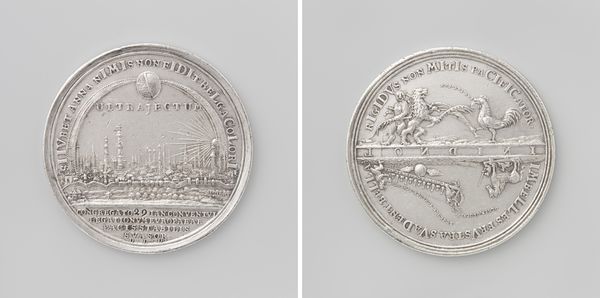
print, metal, relief, bronze
#
portrait
#
medieval
# print
#
metal
#
relief
#
bronze
Dimensions: diameter 5.9 cm, weight 26.50 gr
Copyright: Rijks Museum: Open Domain
Editor: So this is Johann Blum's "Peace of Münster," from 1648. It looks to be some kind of medal, perhaps bronze or another metal. What I find striking is the density of imagery crammed onto such a small surface. How do you even begin to unpack something like this? Curator: Indeed, it's incredibly rich in symbolism! Think of it not just as a record, but as a carefully constructed argument. The medium itself - a medal - lends a sense of permanence and authority. What first strikes you about the images, before you delve into detail? Editor: The chariot scene is pretty vivid! And the depiction of the city, perhaps Münster itself, seems idealized and orderly. But what’s the deal with the chariot and the lions? It's a bit… aggressive for a peace treaty, right? Curator: It is! That chariot scene… It’s a clear invocation of triumph. Consider it: a female figure, possibly Pax, the Roman goddess of Peace, riding a chariot pulled by lions. What emotions or associations do lions typically evoke? Editor: Power, strength, royalty… certainly not meekness. So it's almost as if Peace is being asserted through power, rather than gentle agreement? Curator: Precisely! It suggests that the peace achieved wasn't a passive event, but rather something hard-won, a testament to strength and divine favor. How does that understanding impact your sense of that 'idealized city', as you call it? Editor: That shifts things considerably. It makes the orderly cityscape less about tranquility and more about the rewards and security that come with a powerful peace. It’s like, “We are strong, therefore we have peace.” Curator: Exactly! This medal showcases how images function as a complex form of memory, linking the immediate event, the Peace of Münster, with broader cultural ideas about power, divine right, and the fruits of a successfully concluded conflict. Editor: So, it’s not just a celebration, it's also a carefully crafted statement, meant to be read and interpreted. Amazing, thank you!
Comments
No comments
Be the first to comment and join the conversation on the ultimate creative platform.
